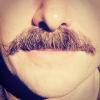-
Posts
172 -
Joined
-
Last visited
Profile Information
-
Occupation
Cinematographer
-
Location
New York, NY
-
My Gear
Canon 514XL is my favorite, Canon 814XL-S and Nizo 801M are also favorites. Also have Canon 814XL, Agfa MOVEXOOM10, Nizo 156 Macro, Nizo S56, Beaulieu 1008XL, Bell & Howell 2146, Argus Cosina 718
-
Specialties
Motion designer/animator by day but a few years ago fell in love with Super 8 and now have a business shooting weddings and anything else I can on Super 8!
Contact Methods
-
Website URL
http://www.nickcollingwoodvintage.com
Recent Profile Visitors
10,254 profile views
-
Valentin Iraola started following Nick Collingwood
-

Ektachrome D100 with Canon 310XL, Bolex 350
Nick Collingwood replied to Robert Ante's topic in Super-8
Do not use an ND filter. As many (but not all) Super 8 cameras are TTL metering meaning it'll meter through what the lens is seeing. So the ND is rendered useless basically. As Shane described, you'll see what your camera meters, then open up 1/3-1/2 a stop. I think halfway is good. Technically a third but like I said, I think between 64 and 80 is the sweet spot. 64 gets a LITTLE hot and 80 maybe a touch under? It's really personal preference as some people shoot it 1 stop over at 50 and like it projected. I just noticed on my roll I shot at 64 that the highlights were blown in a few shots but overall had WAY better color and exposure than my roll I exposed at box 100ASA speed. -

Ektachrome D100 with Canon 310XL, Bolex 350
Nick Collingwood replied to Robert Ante's topic in Super-8
Shane I'd say 64-80 is the sweet spot. 1 stop is too much. I've recently shot 2 rolls, 1 at 64 and 1 at 100. The 64 looked GREAT buuuuut the highlights were a little hot. Definitely better exposure and the colors popped. Just matters if the clipping on the highlights would bother you so I'd say 80 is best. The 100 roll looked good but definitely felt a hair underexposed. The 64 will look way better than the 100 projected, for sure. Erin, I wouldn't worry too much. The 310XL will expose any of these films fine on autoexposure. I'd say you may want an ND filter for E100D though as it's not ideal for SUPER bright days but I think it should be fine. As Mark said, overexposure on any of the Vision3 color negative stocks is fine and your 310XL should handle those well for the most part while on auto-exposure. So don't stress. I have a 514XL which is very similar and I get great results! In fact, I believe the stills I posted above were shot in my 514XL with no ND. -
That's great news. They do look miserable to work on. Luckily (knock on wood) my bargain bin 814XL-S I got with a corroded battery hasn't had this common issue. The battery compartment does give me some trouble from time to time though probably from the corrosion I cleaned out.
-
This point has always intrigued me as well. Any bargain zoom lens for 35mm still camera has a variable shutter for the zoom range whereas the expensive lenses have constant aperture. Yet it seems like even cheap-o Super 8 cameras have constant aperture through the zoom range. Anyone with any insight on this discrepancy? Any agreed Michael, a good Super 8 camera with a steady hand and 50D can rival 16mm from years ago with older scan methods.
-
Hmm... when this happened on my 814XL-S, it was either because I was shooting in super cold weather or the batteries were low. Fixing those factors made it run smoothly again so I'm not sure what the deal is with yours. Du-All in NYC services them though.
-

Kodak's new Ektachrome 100 Super 8 film so amazing!
Nick Collingwood replied to Shane C Collins's topic in Super-8
Agreed completely Shane. It doesn't have to do with lamp power, it's the film. I've shot 7285 (2010-2013 E100D) in the same camera as 7294 (new E100D) and the 7285 was perfect, punchy, and bright whereas the 7294 seemed dim in comparison. Recently on a trip to Africa for a gig, I shot one 7294 in my Canon 814XL-S at +2/3 (so 64ASA) and 1 roll in my Nizo 801 Macro at box speed (100ASA) and while both were beautiful, the 814XL-S footage definitely had more punch and projected better. It DID have some clipped highlights but nothing insane. I'd say 64-80ASA is the true speed of 7294, which is frustrating for most S8 cameras since few have exposure compensation. Sure many have manual but that's an annoyance for Super 8 considering it's auto-exposure appeal. Especially since I mainly shoot E100D for vacation footage where I don't want to have to think too much and just want a good projection, not just a good scan. But even at 100, it's still great and I'm grateful for it. The still I attached is from the color corrected (i.e. levels only, not colors) Nizo footage in Africa. Also Jon, you footage would still be projectable. If you kept your composition in the left 2/3 of your viewfinder (if it's a S16 viewfinder) then the projection will just cut off the right edge. Not a huge deal if you're ok with 4:3. You could always still scan it for the full frame. -

Nizo 156 XL questions - Manual, anamorphic, 50D
Nick Collingwood replied to Andreas Eymannsberger's topic in Super-8
Hey. Glad you found this camera! It's a solid little camera. I have one and use it often. A few things: It does have manual exposure but tbh, the joy of Super 8 is automatic exposure. With modern color negative stocks, you have extreme latitude to where you don't need to NAIL the exposure and the built in meters are generally reliable enough. Some people may say otherwise but I've shot probably 200 rolls 80% on auto and they have been great. The manual exposure dial is the top left one where it says (Control/Autom/Manual). Control is to test the batteries. Autom is auto-exposure. And manual is the rest of the dial to change aperture (shutter speed is fixed on most Super 8 cameras. This one is ~220º which is around 1/30). You can see the aperture dial change in the viewfinder on the left. But again, unless you want to lock exposure for a tricky lighting scene, auto is great. I've never done the anamorphic thing but it's probably possible. Been done before. Tricky thing being that the front of the lens rotates to focus so most people I think just have the anamorphic held by supports in front of the lens. Adrian Cousins in the Super 8mm Facebook group has done it a lot. If it's Kodak 100D, it most likely the coveted Ektachrome 100D 7285 stock from the late 2000s to 2013. It's gorgeous, saturated and punchy but it is a reversal stock so less forgiving. But can be projected. Similar to Ektachrome 100D 7294 that Kodak just re-released. This camera can expose it fine. Notice how the ASA readings says with daylight film (100 DAYLIGHT) it can read 100ASA. It'll shoot any modern stock just fine as well. 50D fine. 200T fine. 500T will expose at 160 but the film can easily handle the overexposure so I won't worry about it too much. Tri-X on bulb works fine. Here's a roll I shot in my 156 Macro (same camera but with macro capabilities) on Ektachrome 100D a couple years ago. Hope that all helps! -

Nizo 801 lightmeter dead - what do?
Nick Collingwood replied to Alessandro Malfatti's topic in Super-8
Are you sure your light meter batteries aren't dead? Those weincell 1.35v batteries kinda suck and easily lose charge over time if not stored with the sticker on it. With those batteries dead, even manual metering won't work in that camera, one of the only major design flaws of an otherwise incredible camera. I suggest buying new batteries and seeing if that brings it all back to life. -
Ya I think especially with the description saying the battery compartment is clear... there's really no telling what the issue could be and it's most likely buried deep. Definitely not worth that. If you're sharp, you can sometimes get an 814XL-S for around that price on eBay. My broken one with a corroded battery was much cheaper as I said, and I was willing to risk the $50, not $275!! Nizo's are great. I have a beautiful 801 Macro I love. The black model is quite sexy. haha.
-
As Martin said, this camera is amazing but has a few drawbacks, one of which is using these annoying batteries. The thing with these "Air" batteries is that they kinda "dry out" or something. Notice how when you buy them, they have a little sticker over the flat side? That preserves them. So whenever I'm not using my Nizo 801, I take out these batteries (and maybe the AA but not required) and then reapply the sticker or at least some tape to the flat side. This generally does the trick. Also as Martin said, other voltages will give incorrect readings in the meter so aren't recommended. But the manual mode won't work without batteries so you could do it that way. There are adapters, to answer your question. Underexposure is not ideal for negative film. If it overexposed then I'd say no big deal but under is not good. Up to you I guess. I find Super 8 film too expensive to risk it over $10 of batteries.
-

A little frustrated with Kodak
Nick Collingwood replied to Phillip Mosness's topic in Film Stocks & Processing
I get the complaints with price and wholeheartedly agree but S8 definitely has its place compared to 16mm. Travel. I just got back from a trip to Nepal to hike to Everest Base Camp. Had 2 Canon 514XL cameras with me (1 was a back up) with the wide angle adapter along with 4 rolls of Ektachrome 7285 with me. I would NEVER be bringing a Bolex or K-3 or similar model of camera on a trip like that but Super 8 made it possible, and even allowed me to have a backup camera in case one of these plastic beasts gave up on me. I also recently travelled to Mexico with that 514XL and 2 carts of 7285 and could easily travel around for a day with a small fanny-pack sized shoulder bag that also held my 2 35mm compact cameras and a Polaroid SLR680 (ya I like cameras haha). Again, lugging a 16mm camera along would've made for a totally different experience. I mean, fantastic image quality compared to Super 8 for sure but definitely not as quick or user friendly. While hiking, I could easily reach into my bag, shoot a few seconds of some gorgeous vista and toss it back into my bag before I'd be able to take a reading and set my aperture on a 16mm camera. Let alone the huge weight and size difference in a hiking pack. And now I get to process these rolls (did the 2 Mexico ones on Monday) and project them at home super easily. Granted that cost of Ektachrome 7294 hurts a lot but for me, it's worth it to capture my travels on color reversal film. But if I had to, I'd use Vision3 as well. For professional uses like short films, sure, 16mm has many many advantages over Super 8 but I think those are different markets. Although tell that to the Beyonce and Taylor Swift filmmakers who recently both shot a ton of Super 8 for their documentaries. I shoot weddings on Super 8 and love the portability and speed. Here's to hoping someone at Kodak finally lowers prices haha. One can dream. -
Regarding the overexposure, the notching system in the carts for Super 8 will take of that generally speaking. For instance, 200T is actually read as 160 because when the camera was created, 200ASA film wasn't around. And for 500T, it reads it as 400ASA for the same reason. So already those overexpose the film by 1/3 of stop so you're good to go. You don't need to intentionally overexpose it. Also when using daylight (D) film, the cartridge automatically disables the 85B warming filter built into the camera so you can have the filter set to D or T and it won't make a difference. I also wouldn't worry about the R-RL (Run-Run Lock) switch as it's largely unnecessary unless you really need unattended shooting. R is perfect for most uses. You've got yourself a hell of a camera! 50D will treat you well in bright daylight. I like 200T for it's general versatility between bright outdoors and medium light indoors. Try a roll of Tri-X as well! Enjoy!
-
Agreed with Martin. I shoot a LOT of Super 8 these days and ALWAYS use 18fps. I've shot around ~150 rolls since I started shooting a few years back and literally have shot like 4 at 24fps. I get it all scanned at 2K and all that other jazz but I've always enjoyed the extra ~50s one gets from 18fps and have hardly ever noticed the difference. I think it's worth the sacrifice. One of my favorite cameras is my Nizo 801 Macro, similar to yours! Super sharp. Remember to take out the stupid light meter batteries and retape the flat side to preserve them or else they'll die in a couple months on their own. Good luck shooting!
-
Mattias I am legitimately stunned. That first link of Disney World on R8 is absolutely the most beautiful and sharp 8mm footage I have ever seen! Such incredible detail and colors that I dream of shooting today but obviously cannot. Fantastic work. I've seen 35mm scans look worse than this! haha. I assume the cost and set up of your rig is quite expensive and complicated? I saw your flickr photo.
-

anyone able to scan my b/w reversal super 8 film?
Nick Collingwood replied to Christopher Lee's topic in Post Production
You could scan at numerous places. I'd recommend Gamma Ray Digital near Boston. They do some amazing scans. CineLab also in Boston has student pricing. Or there's a smaller shop by Nick Coyle (https://www.nicholascoyle.com/) that can scan it as well. Might be cheapest. All of these can do 2K which I'd recommend over 1080 or less. The quality difference is huge. Local places in your city will be using the lower quality methods.






